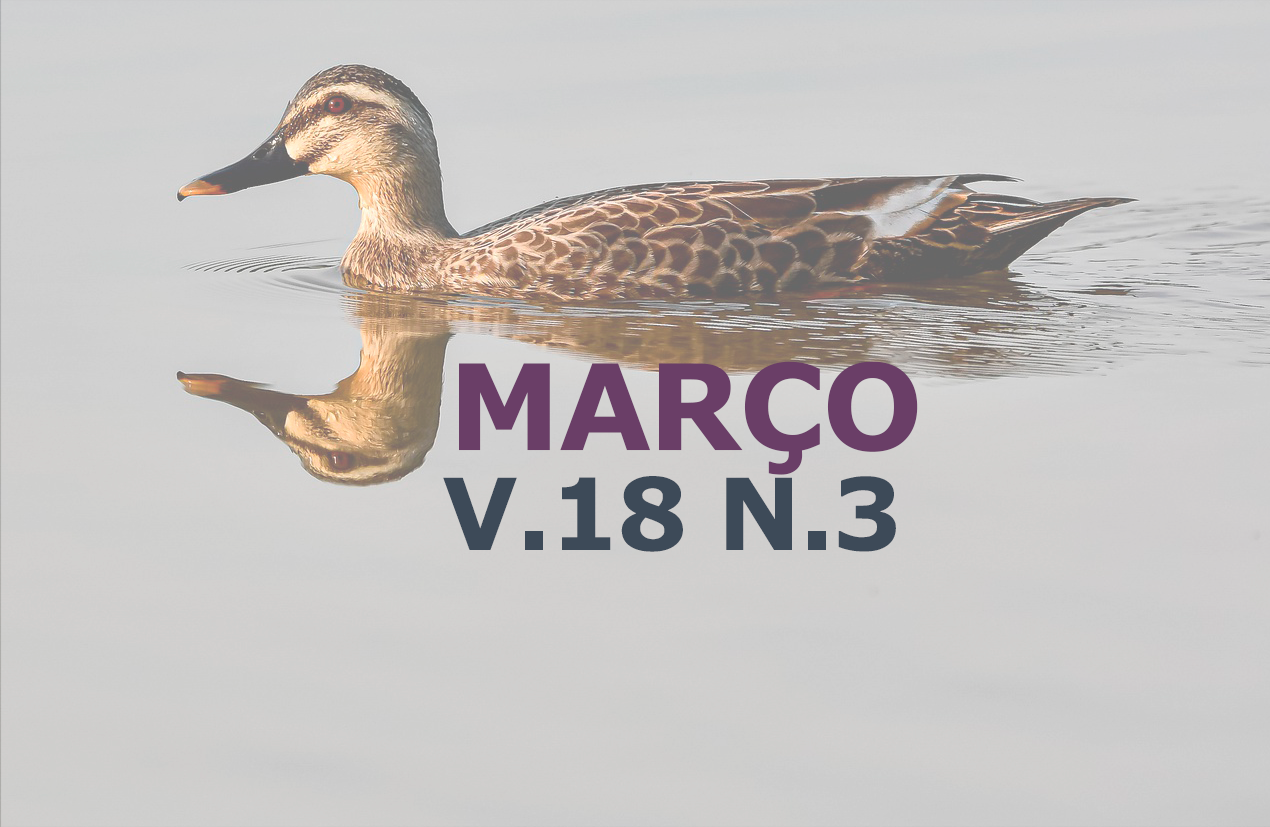Therapy using injectable Viscum album in the treatment and survival of a patient diagnosed with hepatoid gland carcinoma
Case report
DOI:
https://doi.org/10.31533/pubvet.v18n03e1560Keywords:
Câncer, carcinoma, homeopatiaAbstract
Cancer is a pathology of multifactorial cause and complex treatment. Often, despite strictly adhering to the recommended treatment protocols for a specific tumor type, there are instances where conventional therapies fail to yield success. This refractory state can render the disease fatal for patients. Hence, there's an increasing significance in developing therapeutics that aim to effectively control tumor growth while minimizing or avoiding side effects. In this context, homeopathy and Viscum album emerge as promising avenues, notably for enhancing the quality of life in treated patients. By current reports, these therapies contribute to overall well-being and, in rare cases, may lead to complete tumor remission. However, their primary role is often in controlling tumor growth, thereby managing the condition and resulting in chronic illness for patients. This fact does not necessarily denote harm, as patients typically maintain a clinically stable condition throughout treatment. The objective of this article is to present a case of hepatoid gland carcinoma that did not respond to conventional therapy but was subsequently managed through integrative treatment using injectable and subcutaneous homeopathic Viscum album in daily combined potencies. This treatment approach successfully maintained the patient's optimal quality of life for over 12 months.
References
Baghban, F., & Bayati, A. (2020). Hepatoid gland carcinoma in dog: Case Report. Veterinary Clinical Pathology The Quarterly Scientific Journal, 14(53), 85–92.
Engelsdorff, J. S., Pessel, M. V., & Brancher, G. B. (2022). Diagnóstico e tratamento de adenocarcinoma de glândulas hepatoides em um cão: Relato de caso. PUBVET, 16(1), 1–5. https://doi.org/10.31533/pubvet.v16n01a1006.1-5.
Fossum, T. W. (2021). Cirurgia de pequenos animais (3ed.). Elsevier Editora.
Jardim, J., Kobayashi, P. E., Cosentino, P. D., Alcaraz, A., Laufer-Amorim, R., & Fonseca-Alves, C. E. (2018). Clinicopathological and immunohistochemical description of an intrapelvic hepatoid gland carcinoma in a 14-year-old Teckel dog. Veterinary Quarterly, 38(1), 9–13. https://doi.org/10.1080/01652176.2017.1404167.
Liptak, J. M. (2013). Hepatobiliary tumors. In W. S. J. & E. G. Macewen (Eds.), Small animal clinical oncology (pp. 405–412). Elselvier Saunders.
Lucena Júnior, L. C., Lopes, E. B., Santos, C. M., Valois, A. A. C., Menezes, N. J., Santana, S. S., & Lima, I. S. S. (2021). Tratamento integrativo homeopático e farmacopuntura com Viscum album em carcinoma mamário canino: Relato de caso. PUBVET, 15(6), 1–9. https://doi.org/10.31533/pubvet.v15n06a835.1-9.
Mutinelli, F., Vascellari, M., Melchiotti, E., Bigolaro, M., & Bozzato, E. (2007). Intra-pelvic chondrolipoma in a dog. Journal of Comparative Pathology, 137(2–3), 160–164. https://doi.org/10.1016/j.jcpa.2007.06.006;
Pisani, G., Millanta, F., Lorenzi, D., Vannozzi, I., & Poli, A. (2006). Androgen receptor expression in normal, hyperplastic and neoplastic hepatoid glands in the dog. Research in Veterinary Science, 81(2), 231–236. https://doi.org/10.1016/j.rvsc.2005.11.001.
Rodrigues, N. M., Dantas, S. S. B., Quessada, A. M., & Rodrigues, D. S. A. (2017). Carcinoma de células basais em cadela: Relato de caso. PUBVET, 11(8), 744–839. https://doi.org/10.22256/pubvet.v11n8.771-774.
Romano, F. S., Saiga, R., Figueiredo, R. C. C., Cristino, W. E., & Amaral, R. S. (2021). Adenocarcinoma de cólon diagnosticado via colonoscopia e tratado com quimioterapia metronômica em cão. PUBVET, 15(6), 1–4. https://doi.org/10.31533/pubvet.v15n06a838.1-4.
Silva, M. C., Fighera, R. A., Souza, T. M., Graça, D. L., & Barros, C. S. L. (2005). Urethral adenocarcinoma in a bitch. Ciência Rural, 35(4), 935–937.
Telles, S. A., Monteiro, R. C. P., Corrêa, F. M., Calvo, P. Z. U., & Oliveira, A. P. L. M. (2017). Carcinoma de células de transição de bexiga em cão: Relato de caso. PUBVET, 11(1), 82–86. https://doi.org/10.22256/pubvet.v11n1.82-86.
Tobias, K. M., & Johnston, S. A. (2013). Veterinary surgery: small animal-E-BOOK. Elsevier Health Sciences.
Tunç, A. R., Alcigir, M., & Vural, A. S. (2014). Concurrent metastatic hepatoid gland carcinoma and eosophagogastric leiomyosarcoma in a dog. Ankara Üniversitesi Veteriner Fakültesi Dergisi, 61(1), 29–34. https://doi.org/10.1501/vetfak_0000002601.
Turek, M. M., & Withrow, S. T. (2013). Periannal tumor. In S. J. Withrow, D. M. Vail, & R. L. Page (Eds.), Small animal clinical oncology (pp. 423–431). Elselvier Saunders.
Vail, D. M., Thamm, D. H., & Liptak, J. M. (2019). Withrow and MacEwen’s Small Animal Clinical Oncology-E-Book. Elsevier Health Sciences.
Valle, A. C. V. (2020). In vitro and in vivo evaluation of the ultra-diluted Viscum album efficacy and safety. Catholic University of Brasilia – UCB. Brasilia, Brazil.
Valle, A. C. V, & Carvalho, A. C. (2021). Homeopathic Viscum Album on the Treatment of Scamous Cell Carcinoma Lesion in a Dog (Canis familiaris)-Case Report. Integrative Journal of Veterinary Biosciences, 5, 1–3. https://doi.org/10.31038/ijvb.2021523.
Wajczyk, T., Mühlen, R. V, Cunha, L. G., Ometto, M. J., Pereira, J. A., Figueiredo, K. B. W., & Almeida, A. C. (2019). Carcinoma prostático e urocistolitos concomitantes em cão Dálmata Pro. PUBVET, 13(12), 1–4. https://doi.org/10.31533/pubvet.v13n11a448.1-4.
Withrow, S. J., Page, R., & Vail, D. M. (2020). Small animal clinical oncology. Elsevier Health Sciences. https://doi.org/10.1201/9781315381855.
Downloads
Published
Issue
Section
License
Copyright (c) 2024 Ana Catarina Viana Valle, Maria Luiza Pereira Viana Valle, Aloísio Cunha de Carvalho

This work is licensed under a Creative Commons Attribution 4.0 International License.
Você tem o direito de:
Compartilhar — copiar e redistribuir o material em qualquer suporte ou formato
Adaptar — remixar, transformar, e criar a partir do material para qualquer fim, mesmo que comercial.
O licenciante não pode revogar estes direitos desde que você respeite os termos da licença. De acordo com os termos seguintes:
Atribuição
— Você deve dar o crédito apropriado, prover um link para a licença e indicar se mudanças foram feitas. Você deve fazê-lo em qualquer circunstância razoável, mas de nenhuma maneira que sugira que o licenciante apoia você ou o seu uso. Sem restrições adicionais
— Você não pode aplicar termos jurídicos ou medidas de caráter tecnológico que restrinjam legalmente outros de fazerem algo que a licença permita.





